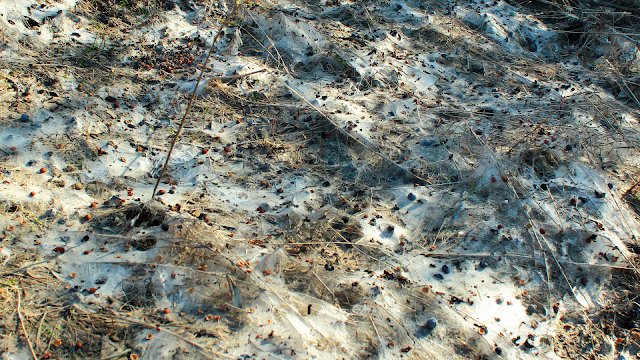Snow Mold and Turf
by Josh Cornell,
Horticulturist, The Gardens on Spring Creek
Colorado weather is anything
but predictable, which can make lawn care challenging. With the long-lasting snow cover we
experienced in Northern Colorado this year, you may be experiencing some snow
mold on your grass.
Snow mold is caused by
cold-weather fungi that primarily affects grasses. While we don’t usually see this problem in our
arid western climate, it does happen occasionally, especially when the snow
lingers. This provides the perfect
conditions for snow mold, which, if allowed to persist, can cause damage and
even kill the crowns of grass plants.
There are two types of snow
mold: gray (Typhula blight) and pink (Microdochium or Fusarium patch). Signs of both types become noticeable in the
spring when the snow melts, leaving circular patches of matted or crusty grass
that range in size across the lawn. With
gray snow bold, these patches are generally grayish-white in color, whereas
pink snow mold causes whitish-pink patches.
Additionally, gray snow mold usually only affects the blades of grass
plants, while pink snow mold can be more severe, killing the crown and the
roots.
Prevention: To prevent snow mold, clean up
your turf areas in the fall. Snow mold
thrives when snow sits on turf for an extended period of time, especially in
areas matted with tall grass, leaves and detritus where moisture can be
trapped. Also try to mow your lawn a bit
shorter for the last mow of the season, before any snow comes to stay. If you
have an area where you have experienced snow mold repeatedly, you can apply a
preventative fungicide in the fall as well.
Reaction: If you find that you do have
snow mold, the best thing to do is to rake out the affected area. This will do
two things, provide airflow and remove any debris that could be harboring the
mold. Sunlight and higher temperatures, along with Colorado’s dry air, are
detrimental to snow mold. After treating
your lawn for mold, you may notice spots that have died. Fill these areas in by reseeding with a
product that matches your turf.
For more lawn care and
gardening tips, check out our “North Forty Gardener” column in North
Forty News, in partnership with Fort Collins Nursery.
